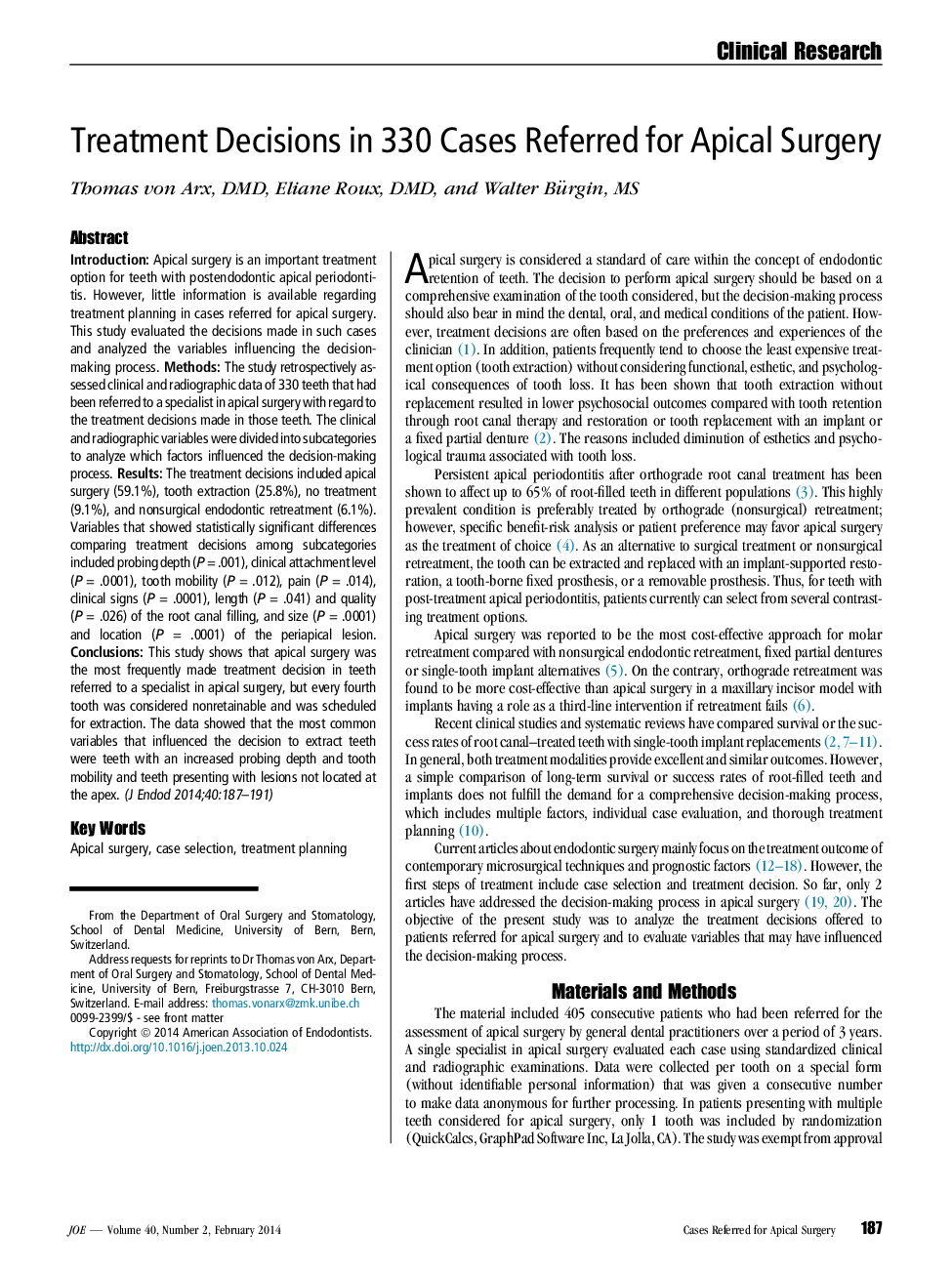| Article ID | Journal | Published Year | Pages | File Type |
|---|---|---|---|---|
| 3146894 | Journal of Endodontics | 2014 | 5 Pages |
IntroductionApical surgery is an important treatment option for teeth with postendodontic apical periodontitis. However, little information is available regarding treatment planning in cases referred for apical surgery. This study evaluated the decisions made in such cases and analyzed the variables influencing the decision-making process.MethodsThe study retrospectively assessed clinical and radiographic data of 330 teeth that had been referred to a specialist in apical surgery with regard to the treatment decisions made in those teeth. The clinical and radiographic variables were divided into subcategories to analyze which factors influenced the decision-making process.ResultsThe treatment decisions included apical surgery (59.1%), tooth extraction (25.8%), no treatment (9.1%), and nonsurgical endodontic retreatment (6.1%). Variables that showed statistically significant differences comparing treatment decisions among subcategories included probing depth (P = .001), clinical attachment level (P = .0001), tooth mobility (P = .012), pain (P = .014), clinical signs (P = .0001), length (P = .041) and quality (P = .026) of the root canal filling, and size (P = .0001) and location (P = .0001) of the periapical lesion.ConclusionsThis study shows that apical surgery was the most frequently made treatment decision in teeth referred to a specialist in apical surgery, but every fourth tooth was considered nonretainable and was scheduled for extraction. The data showed that the most common variables that influenced the decision to extract teeth were teeth with an increased probing depth and tooth mobility and teeth presenting with lesions not located at the apex.
